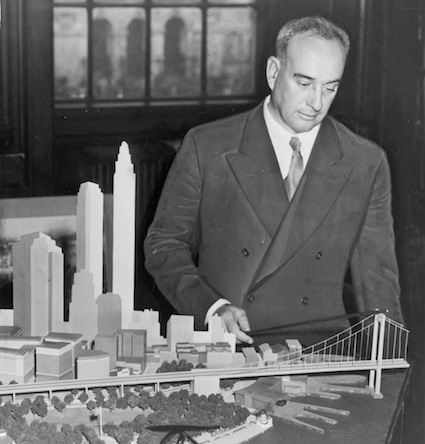Do we need another Robert Moses?

We owe the Brooklyn Heights Promenade to Robert Moses, even if it’s not what he set out to build, but rather came about as an unintended com- promise. In Brooklyn alone, which was hardly the major focus of the ‘master builder,’ we owe to Moses the BQE, the Belt Parkway, the Gowanus Expressway, the Prospect Expressway, Owl’s Head Park, Marine Park, Canarsie Beach Park, Spring Creek Park, the Cadman Towers apartments, and those links to other boroughs, the Brooklyn-Battery Tunnel (though Moses dearly wanted to make that a bridge instead) and the Verrazano-Narrows Bridge. Not all of these are equally regarded as blessings, but the balance would seem to be in favor of the good.
The question of whether we need another Moses was speculated on in the Nov. 20 New York Times by architecture critic Michael Kimmelman, writing about the need for a more radical approach to defending the city against future rising waters and storm surges. Recognizing that Moses’ often callous methods destroyed many neighborhoods and starved mass transit, Kimmelman wrote that after Moses the city turned to such “good things” as community-based initiatives, preservation and environ- mentalism, but also “lost something of its nerve.”
“Our election cycles tend to thwart infrastructural improvements that can take decades and don’t provide short-term ribbon-cutting payoffs for politicians,” Kimmelman wrote, noting that the politicians also don’t like to make decisions that will upset their constituents, such as deciding that it might be wiser not to rebuild Sandy-devastated areas like Breezy Point. He thought the people there “should be given knowledge, power and choice about their options, then the responsibility to live by that choice” — presumably meaning they should not expect another round of reconstruction in the event of a new disaster. The trouble is, people insist on wanting to live where it’s unwise.